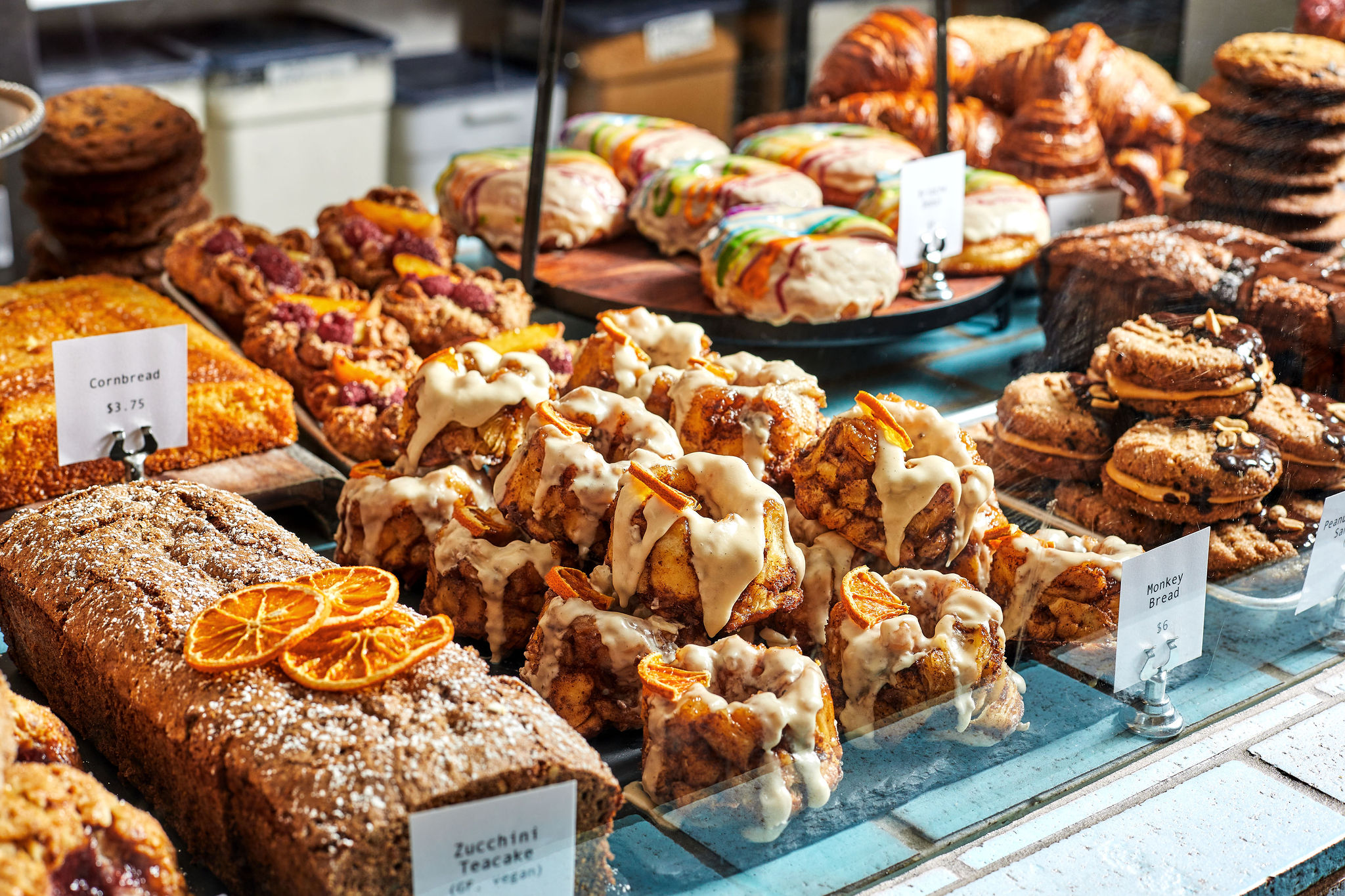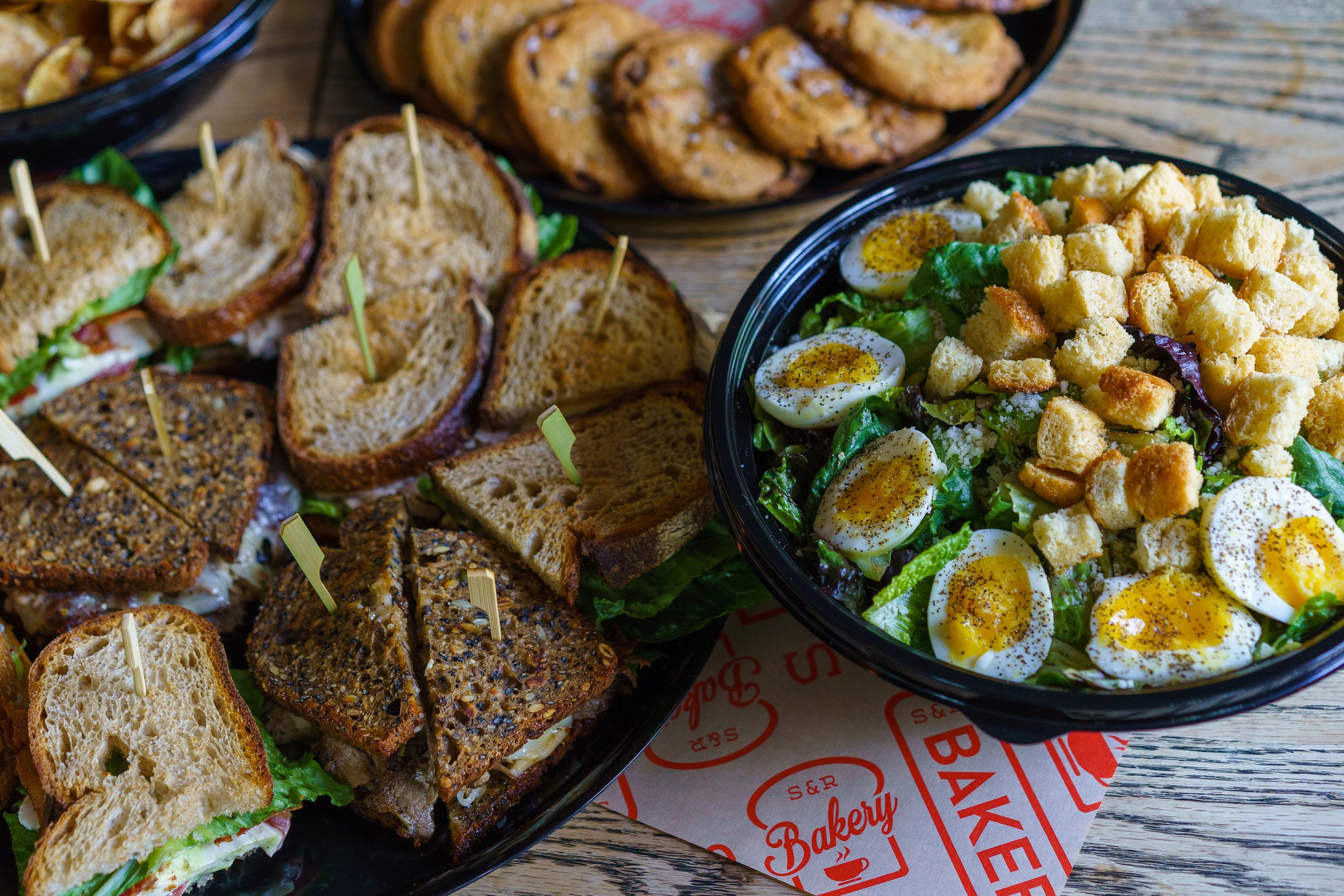Understanding the Art of Bakeshop Products: From Freshly Baked Breads to Alluring Pastries and Finger Foods
From the science behind the excellent loaf of bread, where fermentation and gluten growth play critical functions, to the skill needed for producing layered breads, each aspect discloses an engaging narrative of craftsmanship. The versatility of finger foods shows exactly how taste and appearance can be artfully integrated to involve varied preference choices.
The Science of Bread Making
At the heart of every loaf of bread exists a remarkable interaction of chemistry and biology. The procedure of bread making starts with the combination of flour, salt, yeast, and water-- each ingredient playing a crucial role in the end product. Flour has proteins, largely glutenin and gliadin, which, when combined with water, form gluten (Birthday Party Maddington). This elastic network is important for capturing gases created during fermentation.
Yeast, a living microorganism, ferments the sugars present in the flour, producing carbon dioxide and alcohol at the same time. The carbon dioxide gas develops bubbles in the dough, triggering it to climb and create a light texture. The temperature level and moisture during fermentation substantially influence yeast activity and, subsequently, the bread's taste and texture.

Mastering Bread Techniques
How can one attain the delicate equilibrium of structure and flavor that specifies exceptional bread? Understanding bread strategies needs a deep understanding of active ingredients, approaches, and the science behind them. Fundamental to this craft is the selection of premium ingredients-- flour, butter, sugar, and eggs-- each playing an essential role in the final item's flavor and appearance.
The technique of lamination, which entails folding layers of dough and butter, develops the wanted flakiness in pastries like croissants and smoke pastry. Precision in temperature is essential, as butter should continue to be cool to make certain optimum layers. Correct blending methods, such as the creaming method for cakes, make sure also consolidation of air and fat, resulting in a light and airy crumb.
Furthermore, keeping the right moisture degrees throughout baking can dramatically affect the outcome, making certain that pastries rise correctly and attain that golden-brown finish. Lastly, the art of pastry additionally requires persistence and method; each effort boosts one's ability and understanding of the intricate balance needed to produce irresistible pastries that thrill the detects. Proficiency in these techniques inevitably distinguishes a skilled pastry cook from an amateur.
Kinds Of Finger Foods
The globe of culinary delights expands past pastries to encompass a vast array of finger foods, which are celebrated for their comfort and flexibility. These bite-sized deals with are ideal for celebrations, using a selection of tastes and structures that accommodate varied palates.

On the sweeter side, small tarts and bite-sized cupcakes provide a delightful finish to any type of dish, appealing to those with a craving for sweets. Furthermore, cheese and charcuterie boards function as an innovative selection, enabling visitors to customize their bites with an assortment of meats, nuts, fruits, and cheeses.
Taste Profiles in Baking
Baking is a detailed dance of flavor profiles that integrates pleasant, tasty, and umami notes to produce a harmonious experience for the palate. Understanding these profiles is essential for bakers seeking to raise their developments.
Active ingredients such as delicious chocolate and sugar introduce intricate pleasant notes that can either control or complement various other tastes. Components like cheeses, flavors, and herbs can transform an easy dough right into a diverse flavor experience.
Umami, often overlooked in cooking, plays a description significant role in enriching tastes. Components such as aged cheeses, fermented items, and even specific nuts contribute to a savory deepness that enhances general taste.
Additionally, the interplay of level of acidity from ingredients like buttermilk or citrus zest can lighten up flavors, providing a rejuvenating counterpoint to sweetness. By attentively incorporating these flavor accounts, bakers can craft items that reverberate with diverse tastes buds, creating a remarkable cooking experience. Inevitably, understanding flavor accounts is essential to advancement on the planet of cooking.
Important Cooking Devices and Ingredients
Recognizing flavor profiles in cooking collections the stage for selecting the right tools and components that help with the production of phenomenal baked products. The structure of successful baking lies in having crucial tools available. Key things include mixing bowls, determining mugs, and spoons for accuracy, along with a strong stand mixer or hand mixer for uncomplicated blending. A dependable collection of baking pans-- such as sheet pans, loaf pans, and cake frying pans-- is critical for attaining desired shapes and appearances.
Flour serves as the backbone of a lot of recipes; picking the appropriate type-- be it pastry, bread, or all-purpose flour-- can substantially impact the end result. Baking powder and baking soft drink are vital for developing lift in pastries and cakes.
Additionally, integrating taste enhancers like vanilla extract, flavors, and citrus zest can elevate your creations. By making certain access to these basic tools and active ingredients, bakers can with confidence get started on their cooking trip, crafting a varied selection of fascinating baked items.
Verdict
Proficiency in bread production, bread preparation, and finger food discussion reveals the elaborate relationships in between processes and components. Finger Food Catering Maddington. Exploring varied flavor profiles improves the baking experience, while necessary devices and active ingredients supply the foundation for success.
Just how can one attain the delicate balance of appearance and flavor that defines outstanding bread? Basic to this craft find out this here is the option of premium components-- flour, butter, sugar, and eggs-- each playing an essential role in the last product's taste and appearance.

Comprehending taste profiles in baking collections the stage for selecting the right tools and ingredients that promote the production of outstanding baked products. Exploring diverse taste profiles enriches the baking experience, while important tools and ingredients supply the structure for success.